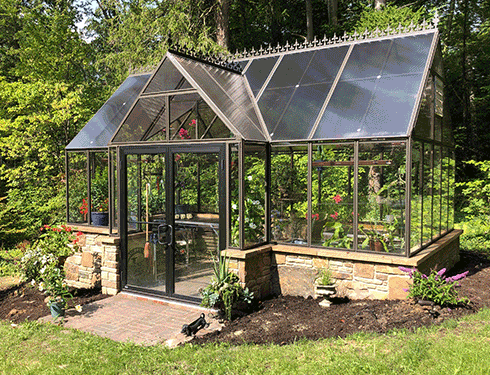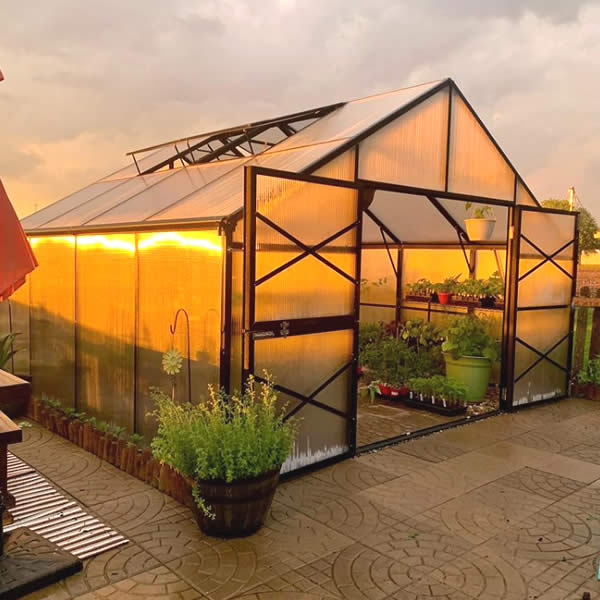Growing Excellence: Monarch Greenhouse Construction Utah Finest
Wiki Article
The Future of Greenhouses: Advancements in Sustainable Farming
Are you interested regarding the future of greenhouses and just how they are transforming lasting farming? Look no additional! In this short article, we will certainly discover the exciting advancements that are paving the method for a greener and a lot more efficient farming industry. From advanced climate control systems to upright farming techniques, water-efficient irrigation approaches, sustainable power integration, and clever data analytics, these developments are transforming the way we expand our food. Prepare yourself to discover the future of sustainable agriculture in greenhouses!Advanced Environment Control Solution
To achieve ideal expanding problems, you can count on the advancements in greenhouses with advanced environment control systems. These systems have actually reinvented the means we cultivate crops, providing a controlled setting that contributes to plant development. With these ingenious systems, you can currently manipulate temperature level, humidity, light degrees, and even CO2 focus to create the best problems for your plants to prosper.One of the vital features of these sophisticated climate control systems is their capability to control temperature level. By utilizing sensing units and automated controls, the greenhouse can change the temperature level based on the particular needs of the plants. This makes sure that they are never ever revealed to extreme warmth or cool, which can be harmful to their growth.
Humidity control is one more important facet of these systems. By maintaining the perfect moisture degrees, you can avoid problems such as mold and mildew, mildew, and illness from affecting your plants. These systems can additionally regulate the amount of light that gets to the plants, ensuring that they get the ideal quantity for photosynthesis.
Moreover, advanced climate control systems can also control carbon dioxide concentrations. By increasing the degrees of CO2 in the greenhouse, you can improve plant growth and performance. This is particularly helpful in locations with low natural carbon dioxide degrees.
Upright Farming Methods
One vital upright farming technique is making use of piled expanding systems. Stacked growing systems are typically utilized in urban locations where room is limited.One prominent technique is referred to as vertical hydroponics, where plants are expanded in nutrient-rich water without soil. This strategy is extremely reliable as it lowers water usage by up to 90% compared to conventional farming techniques. In addition, given that the plants are expanded indoors, they are safeguarded from diseases and insects, minimizing the need for chemicals.
Another technique is aeroponics, which includes suspending the plant origins in a haze or air environment. This method permits for optimum nutrient absorption and oxygenation, leading to faster development and higher returns. Aeroponics also makes use of less water than traditional farming and can be carried out in upright systems, making it a popular selection for vertical farming.
Water-efficient Irrigation Methods
When it comes to implementing water-efficient irrigation methods in lasting agriculture,Maximizing water preservation is vital. With global water shortage coming to be a pressing problem, it is important to develop cutting-edge strategies that optimize water usage in greenhouse procedures.One promising method is drip irrigation, which delivers water directly to the plant roots, decreasing waste and evaporation. By making use of a network of tubes with small emitters, water is applied gradually and exactly, making sure that plants receive the required wetness without excess drainage.
An additional efficient method is the usage of dirt moisture sensing units. These tools gauge the moisture material in the soil and offer real-time data to farmers. By keeping an eye on the soil's wetness levels, farmers can precisely identify when and how much water to use, stopping over-irrigation.
In addition, the application of rain harvesting systems is getting appeal in greenhouse agriculture. Collecting rainwater from roofs and keeping it in storage tanks allows farmers to use this natural deposit for irrigation functions, minimizing reliance on conventional water resources.
Finally, the adoption of automated irrigation systems can significantly improve water effectiveness. These systems use sensors to find soil dampness degrees and climate condition, changing irrigation routines appropriately. By optimizing water usage based upon real plant needs, these systems can minimize water waste and promote sustainable farming techniques.
Renewable Resource Integration
Renewable energy integration in greenhouses provides several advantages, including lowered running prices and lowered reliance on non-renewable power resources. The created power can after that be made use of to run numerous operations within the greenhouse, such as air flow, illumination, and heating systems. These turbines harness wind power and convert it right into electrical energy, which can be utilized to supplement the power requirements of the greenhouse.Smart Data Analytics and Automation
To enhance the efficiency of your greenhouse procedures and enhance source application, take into consideration implementing wise information analytics and automation. Smart information analytics entails accumulating and evaluating data from various sensing units and devices within your greenhouse. By keeping an eye on factors such as temperature, moisture, light levels, and dirt moisture, you can obtain important understandings right into the health and development of your plants. This information can aid you make educated choices about adjusting ecological problems, optimizing irrigation schedules, and preventing potential concerns before they develop.
This can include automating the control of illumination, ventilation, irrigation systems, and nutrient delivery. By automating these processes, you can make sure that your plants get the best problems and nutrients at the best time, without the requirement for constant manual treatment.
Additionally, clever information analytics and automation can collaborate synergistically. The data accumulated by sensors can be made use of to inform computerized systems, enabling them to make real-time modifications based upon the existing conditions. This combination of data analytics and automation can cause more accurate and efficient resource allowance, ultimately leading to greater returns and far better plant high quality.
Verdict
In final thought, the future Monarch Farm Greenhouse Utah of greenhouses in sustainable farming looks appealing. With sophisticated climate control systems, upright farming techniques, water-efficient irrigation approaches, and renewable power assimilation, greenhouses are becoming a lot more environmentally pleasant and efficient.
By maximizing water usage based on real plant needs, these systems can lower water waste and advertise sustainable farming methods.

Report this wiki page